| |
Analog crossover/equalizer
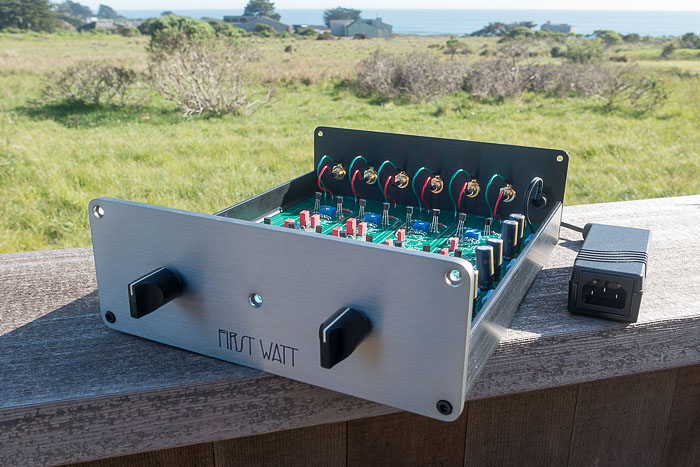
| My friend and neighbor in Sea Ranch,
Nelson Pass, was inspired to develop an analog crossover equalizer for
the LXmini. The transfer functions for the LXmini woofer and tweeter
equalization were derived from free-field acoustic measurements and
originally implemented, together with a standard LR2 crossover, in a
miniDSP 2x4 digital signal processor. |
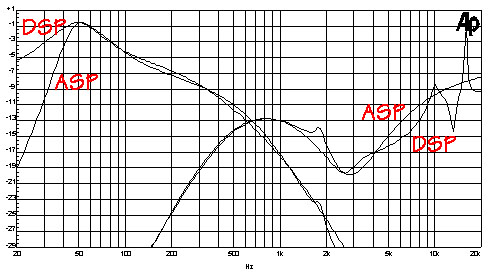 |
Nelson approximated the
original woofer and tweeter frequency response curves of the DSP with
minimalist analog circuitry.
Above 1 kHz there are deviations, which have surprisingly small sonic
consequences. But we are not yet completely settled on a final curve. As
it is now, I could gladly live with what we have, and refinements would
likely be very subtle only. |
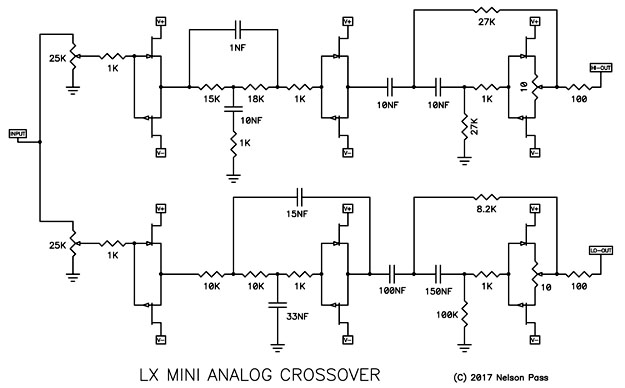 |
All active devices are
unity gain, complementary
JFET buffer stages. Harmonic distortion is below 0.001%. It rises to
0.01% at 7 Vrms output, which is far more voltage than needed to clip
most common power amplifiers.
Note the low component count and simplicity of
circuit topology. Though that comes with limitations in what frequency
response curves can be realized, it fits Nelson's philosophy of Zen-like
beauty in design and nicely matches my design philosophy behind the
LXmini.
The circuit runs off +/-12V rails, which are
derived from an inexpensive 24VDC switching supply.
|
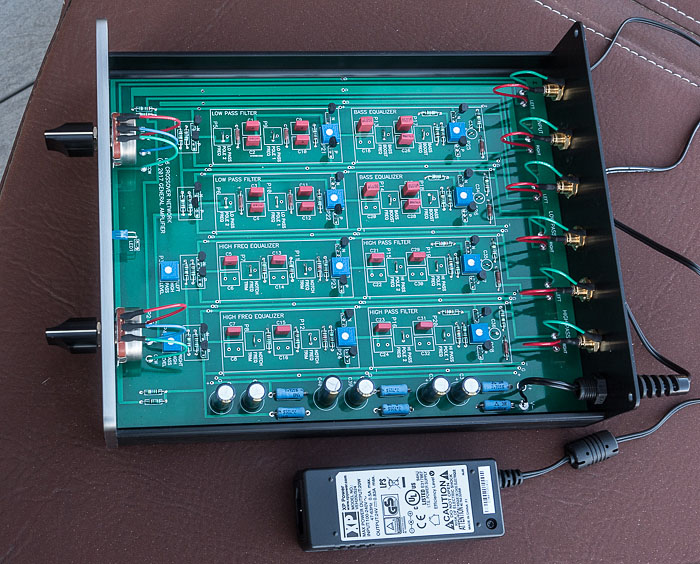 |
Here is the LXmini ASP
implementation, which very much follows the construction format of an
earlier xo/eq product from Nelson's First
Watt company.
His craftsmanship and quality of work are
impeccable and admirable.
An inexpensive, high quality blank circuit board
for the LXmini ASP will become available via the DIYAUDIO
STORE and all LXmini construction plan owners will have access to
the DIY circuit assembly information via their support page.
|
Meanwhile, Nelson developed his ASP
further: A
3-Way ASP, that can be used for LXmini, LXmini+2 and LXstudio.
XLR or RCA in-/outputs
(stuffed
pcb with case or
bare
pcb with case and matched jfets or
bare pcb)
from
LINKWITZ.store
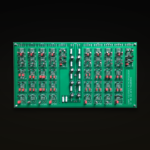 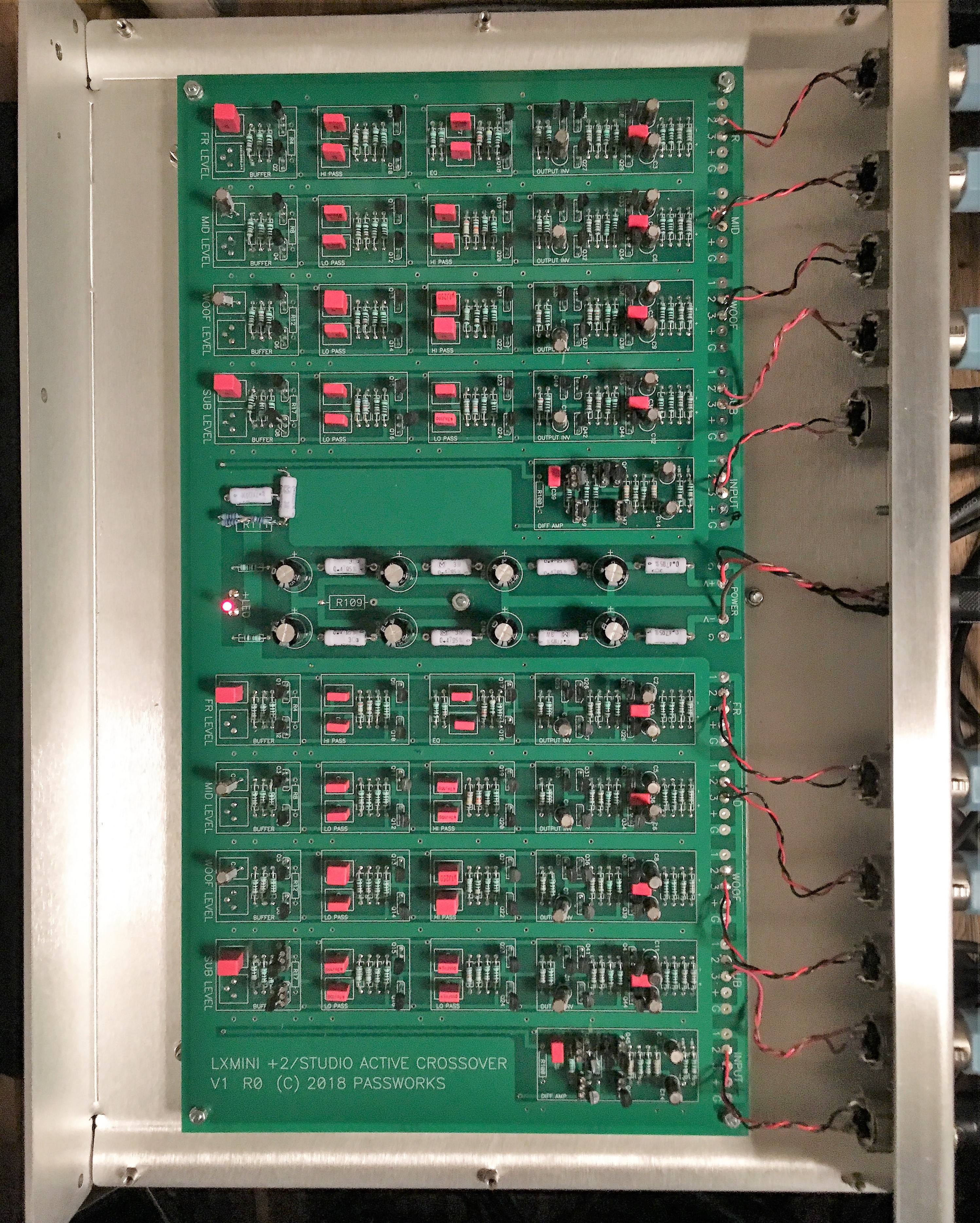 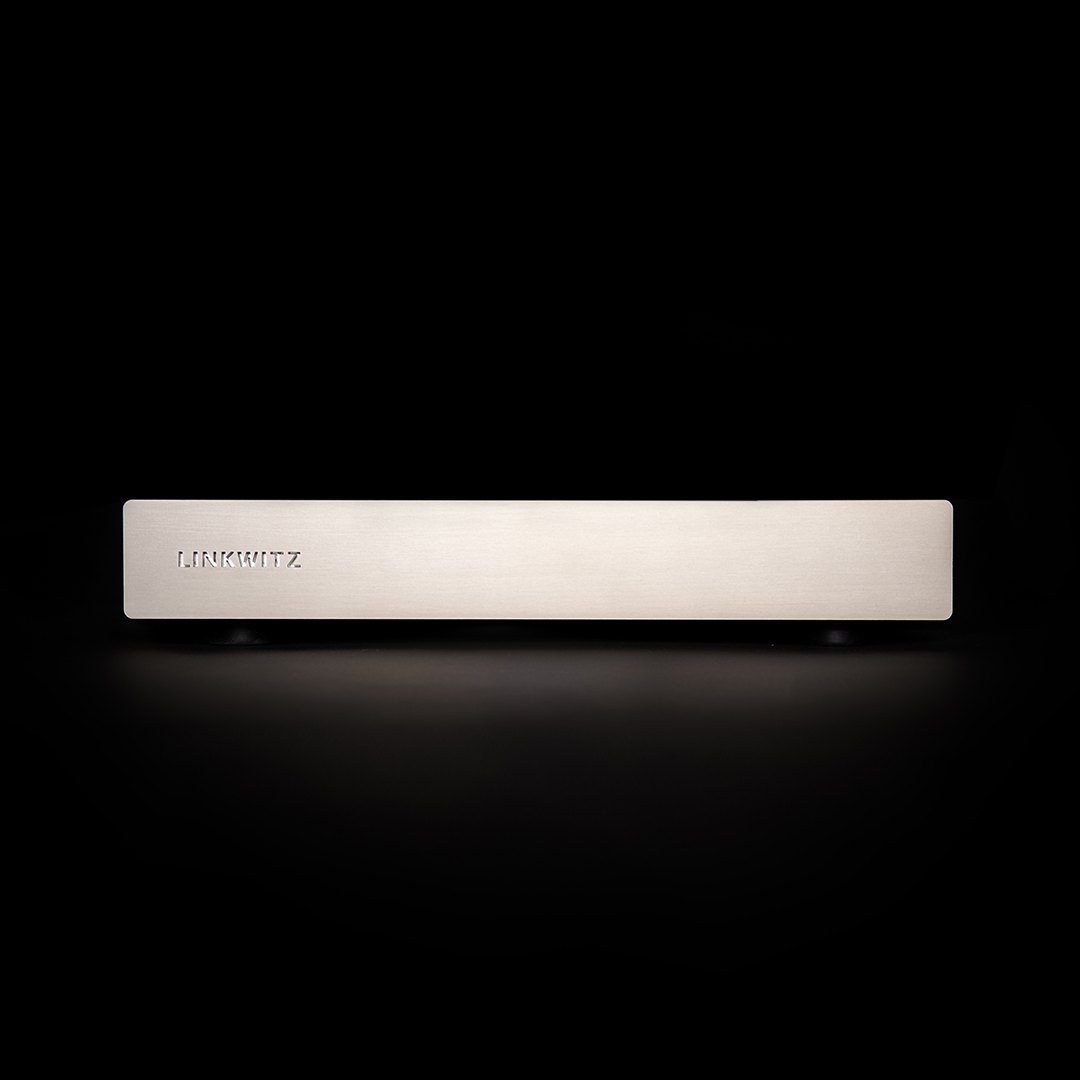
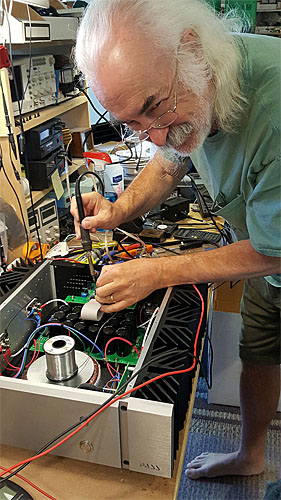 |
August 31, 2017 update
- LXmini ASP
Nelson has laid out a small circuit board for the
LXmini Analog Signal Processor, has selected currently in production
JFET's and matched them into pairs for the buffers, has selected a small
power supply and chassis. All this should be available for DIY from the diyAudio
Store and/or Madisound
by the time of:
Still in the works is a circuit board design for
the LXmini+2 ASP. It would also serve the LXmini without dipole
subwoofers. Nelson's plan is to show a working LXmini+2 analog system at
Burning Amp 2017.
We both will give talks. Mine is likely to be
about:
Baffle design, diffraction, radiation pattern and stereo imaging (PDF)
See, for example, a related discussion on diyAudio:
What
are some good example of baffle design to improve diffraction
Hope to see you there.
PS:
Be sure to read the stereophile
interview with Nelson. It's just as I know him!
Nelson
Pass: Circuit Topology and the End of Science |
Generally, the required LXmini
crossover/equalizing can be realised in the analog domain (ASP based)
or in the digital domain (DSP based) ASP
based crossovers (Nov 2018) are e.g.
********************************************************************************************************************************************************
|